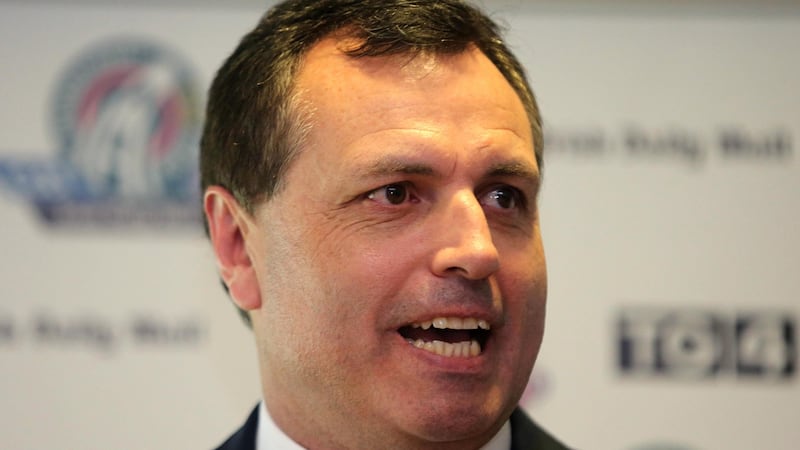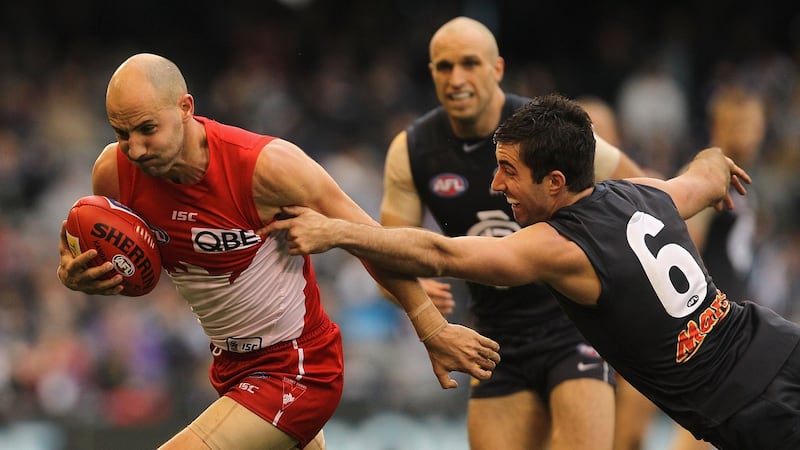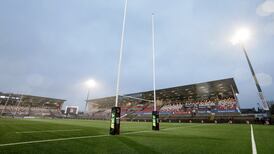Oisín Mullin's confirmation as a Geelong player makes him one of the most decorated captures of a Gaelic footballer by the AFL. Only Tommy Walsh and Ciarán Sheehan, both All-Ireland medallists, would count in the same category as the 21-year old Mayo defender, who heads down under with two All-Ireland final appearances, an All Star and Young Footballer of the Year award.
Paul Earley is well placed to assess his prospects. The first GAA recruit to play in the AFL, then the VFL, he went from Roscommon to Melbourne and made one appearance for the Demons in the 1984 season before returning home for family reasons and winning an All Star in 1985.
He has maintained his interest in the AFL since and managed the Ireland international rules team in 2013 and ’14. His views on Mullin are that whereas he brings an ideal skills set to Geelong, he has left it a little late.
“He’s not too old but he is on the outer limit. He does though have most of the attributes that are needed to be a successful Aussie rules player: he has incredible speed – pace and acceleration to a greater degree than most of the players who have gone down to Australia.
“That’s a hugely important attribute in the game because of the tackle. You have to be able to win the ball in tight spaces and accelerate out and he has that well above average.
“He has good ball skills and is good in the air and the fact that he’s played in defence, full-back and half-back lines, is an advantage because when an Irish player goes out to the AFL they tend, even with forwards, to teach them how to play the game by playing off the half-back line where they’re facing the ball a lot more.
“Even when I went out, I played wing and midfield – three across the middle – and sometimes off the half-back flank. It was to learn how to play the game, facing the ball and reading the play. He’s at an advantage already because he’s been doing that for a number of years in Gaelic football.”

The loss to Mayo is hard to quantify but equally there’s no escaping the seriousness of his departure.
“It’s a big negative for the county,” according to Early, “because they were hoping to build their defence around him and if he’d stayed injury-free he was destined to be a real superstar.
“He had everything, that tight marking ability to close down a key opponent, pace, strength, skills – able to get forward and kick scores. He was on track to be the next Lee Keegan and possibly better because of that repertoire of skills.”
All mightn’t be lost for Mayo, though. Increasingly the AFL career profile for Irish recruits is a few years before returning home. There have been careers long enough to reach retirement, like the late Jim Stynes and Seán Wight, as well as Tadhg Kennelly, the retired Mayo footballer Pearse Hanley and the long-serving Zach Tuohy, who is now a club-mate of Mullin at Geelong but that’s not the norm.
A number have made their way home and resumed intercounty careers that culminated in All-Ireland success, most recently Conor McKenna, who won a Celtic cross with Tyrone having returned just 12 months previously after a three-year stint with Essendon.
Others were Dermott McNicholl (Derry), Brian Stynes (Dublin), Anthony Tohill (Derry), Tadhg Kennelly (Kerry), Michael Shields (Cork), Ciarán Kilkenny (Dublin).
“If they haven’t suffered serious injury,” says Earley, “they tend to come back as better, more rounded players. Not all the time but generally.”
He says that Mullin faces two main challenges in his AFL career.

“One, it’s a little bit late in that 21 is on the fringe as opposed to being 19 or 20 and still in learning mode. The second is that he’s played at such a high level here, two All-Ireland finals, because over there he’s a rookie and down at the bottom of the ladder.
“He may find it frustrating after a pre-season learning how the game operates. It might take a little longer to break in. It’s different when you’re coming out of minor and haven’t had that exposure at the highest level with and against elite players. You’ve to step back and learn a new game.
“It’s also when you have been so prominent, All Star and Young Footballer of the Year, you can end up thinking about the big days you’ve had in Croke Park with Mayo in All-Ireland finals and how you’re a long way from there. You can miss the buzz and the pull of home can become bigger, as you realise what you’ve left behind.
“Against that, in terms of big-game performances, skill and pace, they are really strong attributes that are in demand in the AFL.”















